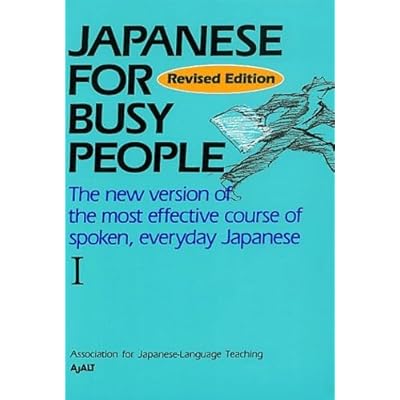


Japanese for Busy People (Books 1&2 and Kana Workbook)
Japanese Association of Language Teachers
(Book 1 - Oxford University Press, USA: 1995; Book 2 - Fitzhenry & Whiteside: 1996)
Read: from May 2005 onward (I still use Book 2 regularly)
When I first started wanting to learn Japanese over a year ago, Randal lent me his old text, Japanese for Busy People (Book 1), that he'd used when he'd started Japanese lessons many years before. So I was quite pleased when the Japanese course that I took at Algonquin turned out to use the same text as well!
Book 1 is really well-organized. It has short, concise lessons that introduce a few grammar points and some vocabulary, then many exercises to get you using, learning and really remembering what you have learnt. Book 2 is slightly more unwieldy, but still good. It has more grammar and vocab in each lesson, and I find the order in which it is all introduced - thematically (eg., At Work, At the Health Club, etc.) rather than by grammar topic - to not always be intuitive. Plus, I bought the kana version, which is good for practicing my hiragana and katakana practice, of course, but makes reading slow! That will improve with practice, I know.
I also picked up, somewhere along the way, the Kana Workbook for the Japanese for Busy People series. It was VERY useful for practicing katakana and hiragana and really getting them to stick in my head. Now if only they produced a book to teach me, equally simply and painlessly, the 1,945 kanji designated necessary by the Japanese government.



